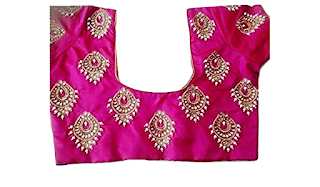Uncovering the Truth about Fake Designer Fashion
Spotting fake designer clothes can be challenging, as counterfeiters continue to improve their techniques. However, there are several key indicators to look out for that can help you identify potential fakes. Here are some tips to spot fake designer clothes:
1. Purchase from reputable sources: Buying from authorized retailers, official brand stores, or well-established online platforms that specialize in luxury fashion reduces the risk of purchasing counterfeit items.
2. Examine the price: If a designer item is significantly cheaper than its retail price, it could be a red flag. Luxury brands maintain consistent pricing to preserve their brand image and quality. Unrealistically low prices often indicate a counterfeit product.
3. Check the quality of materials and craftsmanship: Luxury fashion is known for its exceptional quality. Inspect the fabric, stitching, buttons, zippers, and overall construction. Look for neat stitching, high-quality materials, and attention to detail. Poor craftsmanship or cheap materials are indicators of a potential fake.
4. Compare the item to authentic versions: Familiarize yourself with the authentic versions of designer items. Visit official brand websites, authorized retailers, or physical stores to examine the genuine products. Pay attention to details such as logos, labels, tags, and packaging. Compare these features to the item you're evaluating for any discrepancies or inconsistencies.
5. Verify the brand's authenticity features: Many luxury brands incorporate unique authenticity features to help customers distinguish genuine items from fakes. These features can include holograms, serial numbers, watermarks, or special labels. Research the specific brand's authentication features and check for their presence and authenticity.
6. Scrutinize the logo and branding: Designer brands have carefully designed logos that are consistently reproduced. Examine the logo on the item, ensuring that it matches the authentic brand's logo in terms of font, size, spacing, and placement. Pay attention to any misspellings, slight variations, or poor quality printing.7. Assess the packaging and tags: Luxury brands invest in high-quality packaging and tags. Check for details like box quality, logo placement, and label materials. Counterfeit items may have substandard packaging or tags with spelling mistakes, inconsistent fonts, or flimsy materials.
8. Research the seller: If you're purchasing from a reseller or a secondhand market, research the seller's reputation. Read customer reviews, check their ratings, and look for any red flags. Be cautious of sellers with a history of selling counterfeit items.
9. Trust your instincts: If something feels off or too good to be true, trust your instincts. Counterfeiters are constantly improving their techniques, so if you have doubts about the authenticity of an item, it's better to be safe than sorry.
10. Seek professional authentication: If you're still uncertain about the authenticity of an item, consider seeking professional authentication services. There are experts and reputable companies that specialize in authenticating luxury fashion items. They can thoroughly examine the item and provide you with a conclusive assessment.
Remember, spotting fake designer clothes requires careful observation, knowledge of authentic details, and common sense. By staying vigilant and following these tips, you can increase your chances of avoiding counterfeit items and purchasing genuine designer fashion.



Comments
Post a Comment